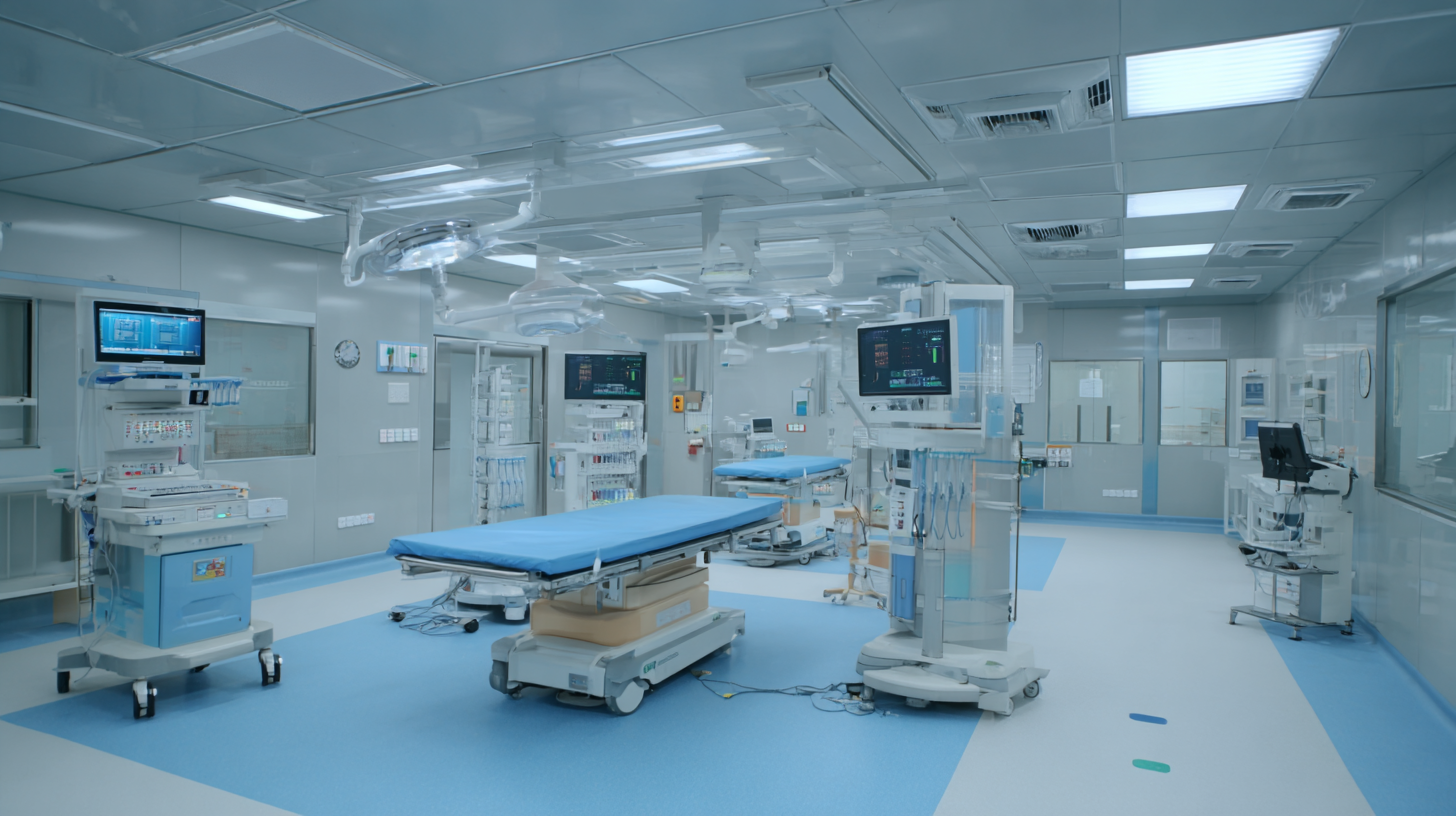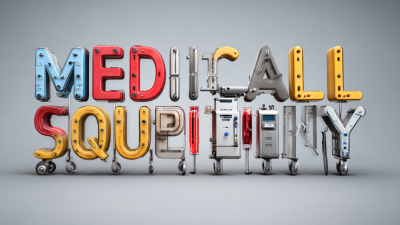Click here to browse our On The Mend Portfolio!
Essential Hospital Supplies for Optimal Patient Care in Modern Healthcare Settings
In today's rapidly evolving healthcare landscape, the importance of high-quality hospital supplies cannot be overstated. These essential items are the backbone of providing optimal patient care, ensuring that medical professionals are equipped to respond effectively to a wide range of health issues. From life-saving equipment to everyday necessities, the right hospital supplies are crucial for enhancing patient outcomes and streamlining medical processes. As we delve into the intricacies of modern healthcare settings, it becomes evident that not only do these supplies support clinical efficiency, but they also play a pivotal role in fostering a safe and comfortable environment for patients.

By examining the various types of hospital supplies and their impacts on care delivery, we can better appreciate their significance in promoting holistic health and well-being in an increasingly complex medical world.
The Critical Role of Medical Equipment in Enhancing Patient Safety Outcomes
In modern healthcare settings, the role of medical equipment is indispensable in enhancing patient safety outcomes. Hospitals equipped with state-of-the-art technology can significantly reduce the likelihood of medical errors, ensuring that patients receive the highest quality of care. From advanced imaging devices to precise monitoring systems, the integration of reliable medical equipment ensures timely diagnoses and effective treatment plans, ultimately leading to better patient outcomes.
Tips for implementing effective medical equipment in hospitals include training staff thoroughly on the use of new technology, regularly updating equipment to the latest standards, and maintaining a robust inventory management system. Ensuring that all personnel are familiar with the equipment not only boosts their confidence but also enhances teamwork and communication among healthcare providers.
Moreover, regular maintenance and timely upgrades of medical devices are pivotal in preventing equipment malfunctions during critical situations. Establishing a routine check-up schedule can help identify potential issues before they affect patient care. Investing in the right equipment and maintaining it diligently reinforces a hospital's commitment to patient safety, enabling healthcare professionals to focus on delivering exceptional care.
Essential Hospital Supplies for Optimal Patient Care
This bar chart illustrates the critical role of various medical equipment in enhancing patient safety outcomes, emphasizing the essential supplies used in modern healthcare settings.
Impact of Supply Chain Management on Healthcare Efficiency and Resource Allocation
The impact of supply chain management on healthcare efficiency and resource allocation cannot be overstated in modern healthcare settings. Effective supply chain strategies play a crucial role in optimizing patient care by ensuring that essential hospital supplies are available when needed. Utilizing data-driven decision-making, healthcare facilities can better understand demand patterns, manage inventory effectively, and forecast needs with precision. This is particularly important in resource-constrained environments where timely access to supplies can significantly influence patient outcomes.
Moreover, leveraging advanced analytics and technologies allows healthcare organizations to enhance their supply chain processes, resulting in improved operational efficiencies and cost reductions. Innovations such as fuzzy AHP and TOPSIS methodologies for capacity planning during emergencies illustrate the importance of adaptive strategies in maintaining service availability. Additionally, creating connected data chains facilitates real-time insights that empower healthcare providers to navigate the complexities of supply chain management, ultimately leading to a more resilient and responsive healthcare system.

The Importance of Personal Protective Equipment in Infection Control Practices
In today's healthcare landscape, the role of personal protective equipment (PPE) in infection control practices is more critical than ever. The projected growth of the North American PPE market reflects an increasing recognition of the need for effective protective gear, with estimates soaring from $31.09 billion in 2025 to $45.03 billion by 2032 at a compound annual growth rate of 5.4%. This surge is largely driven by the rising trends in hospital-acquired infections and the necessity for stringent infection control measures.
To fortify infection control protocols, healthcare facilities must prioritize the usage of appropriate PPE. Here are a few tips for effective infection prevention:
**Tips for Optimal Infection Control with PPE:**
1. Ensure all staff is properly trained on PPE donning and doffing techniques to minimize cross-contamination risks.
2. Regularly assess and update PPE supplies in line with the most current guidelines and emerging health threats, ensuring availability for all staff members.
3. Encourage a culture of compliance where all team members understand the importance of PPE in safeguarding not only their health but also that of patients and colleagues.
As the complexities of infection threats grow, continuous investment in PPE and other essentials will be pivotal in maintaining high standards of patient care and safety within healthcare settings.
How Advanced Monitoring Systems Contribute to Improved Patient Care Quality
In today's fast-paced healthcare environments, advanced monitoring systems play a critical role in enhancing patient care quality. According to a report by Deloitte, adopting real-time monitoring technologies can reduce hospital readmission rates by up to 30%. These systems provide healthcare professionals with instant access to vital signs and other crucial patient data, enabling timely interventions that can significantly impact patient outcomes. The integration of such technologies helps in identifying patterns in patient health, facilitating early detection of potential complications, which is essential in critical care settings.
Moreover, a study published in the Journal of Patient Safety highlighted that hospitals utilizing advanced monitoring systems reported a marked decrease in adverse events, with a reduction in medication errors by 50%. These systems empower clinicians to make informed decisions and enhance their response times, ultimately leading to better patient safety and satisfaction. As the healthcare landscape continues to evolve, the implementation of sophisticated monitoring technologies is not just an option but a necessity for optimizing patient care and improving overall healthcare quality.
The Need for Sustainable Practices in Sourcing Hospital Supplies for Future Resilience
Sustainable practices in sourcing hospital supplies are becoming increasingly crucial for future resilience in healthcare settings. As highlighted during the recent Asia-Pacific Health and Life Sciences Summit, global leaders are recognizing the need for innovation to ensure that healthcare systems can effectively respond to emerging challenges. A focus on sustainability not only enhances the efficiency of supply chains but also contributes to the overall well-being of patients and communities.
In line with this, logistics providers are now embracing digital transformation to improve the supply chain processes, ensuring that medical supplies are sourced responsibly and sustainably. Such initiatives can reduce environmental impact while also delivering essential products to healthcare facilities in a timely manner. By prioritizing sustainable sourcing methods, healthcare organizations can build a more resilient system that is prepared for future uncertainties, ultimately leading to better patient care and improved health outcomes.

Related Posts
-

Premium Medical Accessories Crafted by China's Leading Manufacturers for Global Trust
-

Exploring the Features and Applications of Top Medical Supply Equipment: A Complete Buyer’s Guide
-

5 Best Medical Accessories Driving 2023 Global Healthcare Procurement Trends
-

Exploring the Future of Health Care Supplies at the 138th China Import and Export Fair 2025
-

Transforming Healthcare with Medical Supplies 5 Key Benefits Driving Global Procurement Strategies
-

7 Tips for Selecting the Right Medical Supplies to Enhance Patient Care
View Products
- Bathroom Safety & Shower Systems
- Canes, Knee Walkers, Rollators & Wheelchairs
- Compression Socks, Stockings & Custom Garments
- CPAP Machines, Devices, Accessories & Supplies
- Incontinence Supplies
- Lift, Reclining, and Sleeper Chairs
- Power Scooters, Power Chairs & Accessories
- Ramps & Handicap Access
- Stair, Platform & Portable Lifts
- Blog
Our Locations
Visit Us in CT, NY & CA
Looking for a 'medical store near me'? Call On The Mend for the equipment and service you need!
